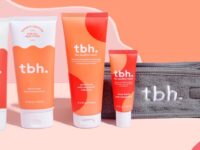
In 2010 the future of social media looked so bright. The channel that marketing dreams were made of. Where FMCG brands built their own communities and market to them for “free”. It was the promised land –100 per cent organic reach and users exposed to product content on a daily basis. Then the walls slowly started to close. Suddenly, you had to pay to play.
The bugbear is fragmentation of channels and overexposure of brands within the social newsfeed. “Content was king” apparently and the recommendation: invest in video. But with between 75-80 per cent of the audience dropping off after the first three seconds, how are you meant to build brand salience? We’d been sold the pipedream and frankly OOH, TV and radio was driving greater ROI. Social suddenly became a big ‘why bother’ moment with serious marketers.
In addition, FMCG brands were told to focus on mental availability and leave lower funnel commercial initiatives alone in this space, unless paying retailers to leverage their social properties, i.e. pay Woolworths and Coles for social posts on their channels, was a route you wanted to take.
So where we are in 2019?
For FMCG brands, unless you place roughly 5 per cent of your media spend behind driving brand on social – yes we’re talking roughly $100k top of the funnel – then you can’t measure brand outcomes, message takeout or the #1 metric you want to take back to your board meeting – purchase intent.
Social is being treated as an extension of OOH. Use a static with a single message to drive reach volumes (70%+). Byron Sharp has a lot to answer for – creativity doesn’t matter just hit them with reach and you’ll be okay. But it isn’t okay. Your brand needs to stand for something and it needs a voice. It’s not only social media that is cluttered; those supermarket shelves are too — and if we take Mr. Sharp’s advice, we need to play the mental availability game and do it well! That means content and creative. Stuff that stands out, shouts louder and drives users down the funnel. Differentiation is critical.
Focusing on social is important as it covers the full purchase funnel and delivers on marketing objectives it previously couldn’t – but many marketers I speak to are still surprised by some of the recent developments in social, tracking and analytics.
Fortune favours the bold — you just have to take risks and here’s how you do it!
First port of call: be brave, tap into a real human insight and show some bloody emotion!
A case in point: Lynx’s Australia fragrance campaign. The campaign, which features New Zealand actor Julian Dennison, launched by promoting the confidence it can provide men – even Kiwis. Leveraging the brand’s heritage of humour and tapping into a human truth – the fierce rivalry that exists between Australia and New Zealand. This campaign delivered a 8.5 per cent YOY increase in sales of LYNX Body Sprays and 10.6 per cent YOY increase in unit sales. The campaign was so successful a New Zealand version was created this year.
On top of this, when you’re brave you don’t need to stick to the rules. Forget the six second norm that now exist on social, Lynx achieved a 72 per cent competition rate for 60 second video assets on Facebook. Not all brands have the money that Lynx has, but we could all learn a lesson from the ‘Lynx Effect’.
Why it worked? Lynx leveraged its data, found a universal truth, and figured out a way to emotionally connect with its audience. This helped to drive an emotive narrative around a product which is, in essence, not very exciting.
Secondly: Don’t discount social performance.
No e-commerce site? That doesn’t mean you discount lower funnel initiatives on social. I have recently written a number of articles about how the new always-on for social is treated like a search channel — driving lower funnel metrics whilst plugging this retail layer into your bigger brand moments. Brand and sales teams are separated in traditional FMCG companies, but now is the time to work together to drive tangible results. Why not take that offline catalogue that Woolies, Coles and Metcash produce and replicate this across social. If you want more shelf space at Coles, Woolworths and IGA, then you need to demonstrate how you are going to shift product.
Social performance is about adopting a digital retargeting approach. Serving consumers with relevant product and promotional content aligned to your retail calendar. The goal: drive lower funnel metrics based on consumer intent. You, firstly, prospect audiences based off third party audiences, website retargeting and lookalikes with recipes, utility or other functional messaging. If they interact with this – bingo – you know they are interested. You then follow up with a conversion asset related to an offer or product offering.
How can you measure success? You can trial pilots in stores with biggest footfalls and benchmark uplifts in product sales. Measure uplift of in-basket data volumes, and analysis of the backend data from Facebook. It’s not commonplace and may help you achieve the holy grail – more shelf space.
Coles and Woolworths are starting to offer social data packages to FMCG brands again, so this may be a solution if you have the money to invest.
Finally; new players in the market.
Amazon has landed. If Woolworths is scared enough to set up a division to combat this, Amazon probably has a viable product on its hands. The time is ripe to reach out and see what partnership opportunities are available.
The Dream
In an ideal world, I would direct my social outputs into three streams of work:
- Brand: Tent pole campaign, brand and NPD moments, which tie into a wider content strategy
- Performance: An always-on retail/social performance strategy (relevancy is key here folks)
- Customer: Build the CRM database and cross-sell
A dream, I know, but one day this dream will probably be the norm and you’ll wonder why you weren’t first out of the gate. So: be brave.
Paul Isbell, strategy & social media director, Redengine SCC.












